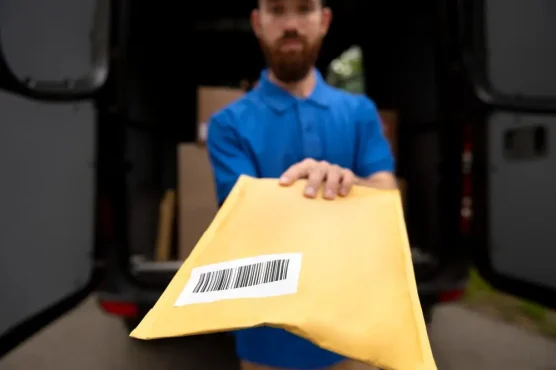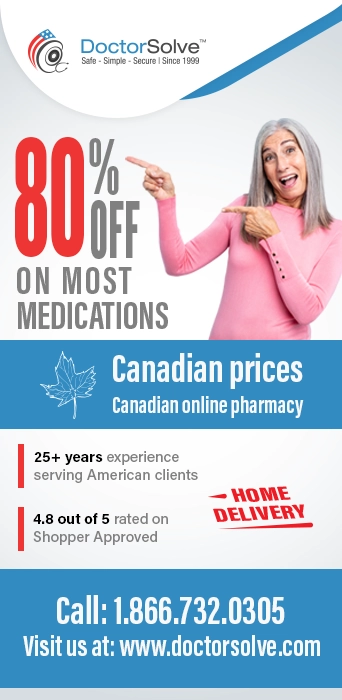In the U.S., rising prescription drug costs are making it harder for many people to afford the medications they need to stay healthy. High drug costs might lead some people to consider lower-cost options, like buying from a licensed Canadian pharmacy. This raises a common question: Do Canadian pharmacies accept U.S. prescriptions? The short answer is yes.
Canadian regulations require that a licensed Canadian doctor review the prescription first. Only after co-signing it can the prescription be filled. This guide offers a solution by breaking down the step-by-step process, and safety tips. If you’re thinking about ordering medications from Canada, this guide covers everything you need.
How to find Canadian pharmacies that fill U.S. prescriptions
Not every Canadian pharmacy may accept U.S. prescriptions. Finding legitimate, safe Canadian pharmacies requires careful research and verification. Here’s what to look for when evaluating Canadian pharmacy options.
1. Cipa certification requirements
The Canadian International Pharmacy Association (CIPA) sets the gold standard for Canadian pharmacy verification. CIPA-certified pharmacies must meet strict safety and operational requirements. CIPA member pharmacies have served over 10 million U.S. patients since 2002 with a perfect safety record. This track record demonstrates their commitment to patient safety and medication quality. Only pharmacies meeting CIPA’s rigorous standards receive certification. So, look for the CIPA seal on pharmacy websites.
2. Physical address verification
Legitimate Canadian pharmacies maintain physical locations with licensed pharmacists on staff. They provide complete contact information, including street addresses, phone numbers, and licensing details. Verify the physical address through online maps and business directories.
3. Prescription requirement standards
Safe Canadian pharmacies always require valid prescriptions for prescription medications. They never offer to sell prescription drugs without proper documentation. Avoid any pharmacy that promises to provide prescription medications without a prescription.
What happens when I send my U.S. prescription to a Canadian pharmacy?
Understanding the prescription processing steps helps set proper expectations for timing and requirements. The process often includes a few verification steps. These steps are designed for safety and compliance.
Secondary medical review process
According to Canadian pharmacy regulations, Canadian pharmacies must have a prescription written by an authorized Canadian healthcare provider. They check the prescription and medical history. If everything is in order, they reissue it as a valid Canadian prescription. This step acts as an important safety checkpoint. In many cases, this step may function like a second layer of review before the medication is dispensed. While the specifics may vary by pharmacy, this added oversight could help ensure the prescription is appropriate and safe for the individual. Some patients might view this as an extra precaution in their treatment process.
Drug efficacy and safety verification
Canadian physicians verify that the prescribed medication is safe and effective for your specific situation. They review your medical history and current medications to identify potential conflicts. This comprehensive approach helps prevent adverse drug reactions.
Dispensing
Once your prescription has been reviewed and approved by the Canadian medical team, the final steps begin to get your medication to your doorstep.
After your prescription gets the green light, the Canadian pharmacy’s licensed pharmacists and technicians get to work. Just like your local pharmacy, they’ll carefully count, prepare, and verify your medication. This step ensures you receive the exact medicine and dosage prescribed. Think of it as the pharmacy physically preparing your order.
Packaging and labeling
Your medication is then securely packaged. This usually involves placing it in child-resistant containers, if applicable, and then a discreet shipping package. The package will be clearly labeled much like a prescription label you’d see at home. The outer shipping package is typically plain to protect your privacy.
Shipping and delivery
Once packed, your order is ready for shipment. Canadian pharmacies generally use reliable postal or courier services for international delivery. After crossing the border (which usually happens smoothly), your package will be handled by a U.S. mail service for final delivery to your address. This entire shipping process typically takes about 7 to 14 business days, though minor delays can sometimes occur.
Communication and tracking
You won’t be left wondering where your medication is. Most online Canadian pharmacies will send you email updates about your order status. You’ll usually receive a shipping confirmation
Is it common for Americans to order prescription medications from Canada?
A study published by the National Library of Medicine reveals that the use of imported prescription medications in the U.S. continues to grow. This trend is largely driven by the high cost of drugs domestically. Recent studies reveal the scope of this trend. According to KFF research from 2021, approximately 20 million Americans report buying or knowing someone who purchases drugs from outside the U.S. This represents roughly 1 in 5 adults nationwide. The primary motivation seems to be cost savings. Many Americans struggle to afford their prescription medications even with insurance coverage. Canadian pharmacies offer the medications at significantly lower prices. The global online pharmacy market reflects this growing demand. The market was valued at $81.6 billion in 2022. Projections show a compound annual growth rate of 17.2% through 2030. This growth indicates increasing consumer acceptance of online pharmacy services.
Why Canadian drug prices are lower
Several factors contribute to Canada’s lower prescription drug prices. Understanding these differences helps explain the significant cost savings available to U.S. consumers.
Government price controls
Canada implements comprehensive price regulation through the Patented Medicine Prices Review Board (PMPRB). This federal agency sets maximum prices for patented medications. The system prevents pharmaceutical companies from charging excessive prices.
Earlier generic availability
Canadian patent laws allow generic medications to enter the market sooner than in the United States. Shorter patent protection periods increase competition and drive down prices. Generic alternatives typically cost 80-85% less than brand-name versions.
Patent linkage rules
Canada’s patent linkage regulations differ from U.S. requirements. These rules affect when generic manufacturers can challenge patents and enter the market. The Canadian system generally favors earlier generic competition.
Patent challenges in Canada often resolve more quickly than in the United States. Faster resolution means generic alternatives become available sooner. This increased competition helps keep prescription prices lower.
Absence of direct-to-consumer advertising
Canada prohibits direct-to-consumer pharmaceutical advertising except for limited circumstances. This restriction reduces marketing costs that are typically passed on to consumers. Lower marketing expenses contribute to reduced medication prices.
Is it safe to buy U.S. prescription meds from Canadian pharmacies?
Safety concerns are valid when considering cross-border prescription purchases. However, reputable Canadian pharmacies maintain high safety standards comparable to U.S. facilities. The key lies in choosing properly certified and regulated Canadian pharmacies. Pharmacies certified by Cipa undergo regular inspections and audits. They must demonstrate compliance with Canadian pharmacy regulations and safety protocols. Canadian pharmacy regulations are similar to U.S. standards in many respects. Health Canada oversees medication safety and quality control. Licensed pharmacists must review all prescriptions before dispensing medications. However, risks exist with unregulated or illegal pharmacy operations. Rogue pharmacies may sell counterfeit medications. Always verify pharmacy credentials through official certification programs before making purchases.
Are drugs sold through Canadian pharmacies the same quality as those sold in America?
Yes, drugs sold through Canadian pharmacies are typically the same as those sold in America. The quality of medications from accredited U.S. and Canadian pharmacies is the same; in many cases, the drugs are exactly alike, just packaged and labeled differently. Health Canada maintains strict quality control standards for pharmaceutical manufacturing. These requirements ensure consistent potency, purity, and safety across all approved medications. Regular inspections verify compliance with good manufacturing practices.
Brand-name medications are typically identical between countries. The same pharmaceutical companies manufacture and distribute these drugs in both markets. Quality control processes remain consistent across international operations.
Generic medications may show slight variations between countries. Different manufacturers may supply generics in each market. However, all generics must demonstrate bioequivalence to the original brand-name drug.
Some medications may have different packaging or labeling between countries. These cosmetic differences don’t affect the medication’s therapeutic properties. The active ingredients and dosages remain the same.
What is the ordering process like at an online Canadian pharmacy?
The best online Canadian pharmacies are easy to use. The ordering process at legitimate Canadian pharmacies follows a structured approach to ensure safety and regulatory compliance. Understanding each step helps set appropriate expectations for timing and requirements.
Step 1: Account Setup
Create an account by providing contact, shipping, and basic medical info. Verify your email and identity, usually within 24 hours.
Step 2: Prescription Submission
Upload a scanned copy or photo of your U.S. prescription. Some pharmacies also accept faxes or direct submissions from your doctor.
Step 3: Medical Review
A Canadian doctor reviews and co-signs the prescription within 1–3 business days. You may be contacted for more details if needed.
Step 4: Order & Shipping
Once approved, orders ship within 1–2 days. Delivery takes 7–14 days, with tracking provided. Customs may cause slight delays.
Commonly prescribed meds & otc differences
Significant differences might exist between U.S. and Canadian medication availability. Some drugs requiring prescriptions in the U.S. are available over-the-counter or behind-the-counter in Canada.
Over-the-counter availability
Tylenol, containing low-dose codeine, is available over-the-counter in Canadian pharmacies. This medication requires a prescription in the United States. Canadian pharmacies may require consultation with a pharmacist before purchase.
Certain proton pump inhibitors (PPIs) like omeprazole are available without prescription in Canada. U.S. consumers typically need prescriptions for higher-strength formulations. This availability can provide cost savings for acid reflux treatment.
Behind-the-counter medications
Some medications in Canada are classified as “behind-the-counter.” These require pharmacist consultation but not a prescription. Examples may include certain antihistamines and decongestants.
Prescription strength variations
Some medications are available in different strengths between countries. Canadian versions may offer higher or lower dose options than U.S. formulations. These differences reflect different prescribing practices and regulatory approvals.
FAQs
Can U.S. doctors send prescriptions to Canada?
How you get your prescription to a Canadian pharmacy depends on that pharmacy’s process. The easiest way is for your doctor to send the prescription to them directly. However, if that doesn’t work, you can always get a written prescription from your doctor and submit it to the online Canadian pharmacy yourself.
Do Canadian pharmacies accept U.S. insurance?
Online Canadian pharmacies don’t accept U.S. insurance plans due to practical complexities. However, this isn’t necessarily a drawback. By avoiding the extensive paperwork and administrative tasks linked with insurance, these pharmacies save significant time and money, which they can then pass on to you as lower medication costs.
Furthermore, U.S. insurance coverage can often be unpredictable. Many people are surprised to find their medications aren’t covered, or their coverage is suddenly dropped. Sourcing your medication from an online Canadian pharmacy can offer a more consistent and reliable solution in the long run.
How do I get a prescription filled in Canada?
To have your U.S. doctor’s prescription filled by an Canadian pharmacy, you’ll need to submit a valid prescription to your chosen Canadian pharmacy. You can typically have your doctor send the prescription directly, or you can submit it yourself online. Once the Canadian pharmacy receives your valid prescription, you can then finish placing your order.
Do you need a prescription for a Canadian pharmacy?
A prescription acts as a critical safeguard for both you and the pharmacy. Any online pharmacy that doesn’t require one might not have your best interests at heart, potentially using unlicensed dispensers or even providing substandard or counterfeit drugs. While dealing with prescriptions can be a hassle, they’re essential for your safety. They ensure your doctor can confirm you’re getting the right medication for your condition, and your pharmacist can double-check for safety and proper dosing.
How do refills work? Can I get a prescription refilled in Canada?
Yes, you can get prescription refilled in Canada. Prescription refills through Canadian pharmacies follow the original prescription’s refill instructions. If your U.S. prescription includes refills, the Canadian pharmacy can honor those refills after the initial co-signing process.
Conclusion
Canadian pharmacies accept U.S. prescriptions. Finding the right medications you need to stay healthy can be difficult, particularly if you’re looking for a hard-to-find drug or are new to the American healthcare system. Online Canadian pharmacies are becoming increasingly popular. The mix of lower prices, strict safety measures, and growing trust in the system makes this option worth serious consideration. DoctorSolve.com stands ready to help you access affordable Canadian pharmacy services safely and legally. As a trusted intermediary with years of experience serving U.S. patients, DoctorSolve connects you with a CIPA-certified Canadian pharmacy. Our streamlined process makes accessing affordable medications simple, safe, and reliable. Whether you’re managing chronic conditions, facing high medication costs, or simply seeking better value for your prescription needs, Canadian pharmacies through DoctorSolve offer a practical solution. Take the first step toward significant prescription savings while maintaining the highest safety standards.
References
- CDC.gov. (2023). Characteristics of Adults Aged 18–64 Who Did Not Take Medication as Prescribed to Reduce Costs: United States, 2021
- AMA.org. (2018). AMA policy on in-person importation of prescription drugs from Canada
- Health Canada. (2021). Choosing a safe online pharmacy
- CIPA.com. (2025). Licensed, Certified, Trusted
- CIPA.com. (2025). Quickly find answers to commonly asked questions?
- Health Canada. (2012). Buying drugs online
- Singlecare.com. (2023). Is it safe to buy prescriptions from Canada?
- NAPRA.ca. (2021). How to Verify if a Canadian Online Pharmacy Is Legitimate
- NAPRA.ca. (2022). Model Standards of Practice for Pharmacists and Pharmacy Technicians in Canada
- National Library of Medicine. (2021). Trends in medication importation by U.S. adults over time
- KFFhealthnews.org. (2016). Faced With Unaffordable Drug Prices, Tens Of Millions Buy Medicine Outside U.S.
- Business Insider. (2023). Millions of Americans are skipping doses because they can’t afford their prescription drugs
- GAO.gov. (2021). Prescription Drugs: U.S. Prices for Selected Brand Drugs Were Higher on Average than Prices in Australia, Canada, and France
- Grandviewresearch.com. (2021). Pharma E-commerce Market Size, Share & Trends Analysis Report By Product Type (Vaccines, Specialty Care, Topical Medicines), By Therapeutic Areas, By Type, By Channel Type, By Platform, By Region, And Segment Forecasts, 2023 – 2030
- Health Canada. (2025). In-Depth Review
- National Library of Medicine. (2021). Time to Marketing of Generic Drugs After Patent Expiration in Canada
- FDA.gov. (2021). Generic Drugs: Questions & Answers
- National Library of Medicine. (2011). Canada’s Patented Medicine Notice of Compliance regulations: balancing the scales or tipping them?
- National Library of Medicine. (2012). Canada’s laws on pharmaceutical intellectual property: the case for fundamental reform
- Health Canada. (2020). Illegal marketing of prescription drugs
- National Library of Medicine. (2021). Negative Consequences of the Widespread and Inappropriate Easy Access to Purchasing Prescription Medications on the Internet
- Health Canada. (2024). Drugs and health products
- Health Canada. (2020). Stop illegal marketing of drugs and devices
- Health Canada. (2024). Good manufacturing practices
- Health Canada. (2024). Drug products
- Pharmaceuticalupdates.com. (2020). Over-the-counter (OTC) Drugs and Different Countries Regulation
- Health Canada. (2009). Opioid Pain Medications Frequently Asked Questions
- Health Canada. (2014). Notice: Prescription Drug List (PDL): Omeprazole
- Health Canada. (2024). Regulation of non-prescription drugs







